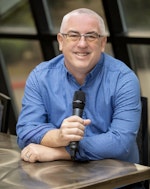EXCLUSIVE: An interview with the American Dental Association on their annual meeting site selection process
When the American Dental Association (ADA) released the dates and locations for its 2014-2018 Annual Sessions in late April, the locations and dates were met with mixed reviews from the dental industry.
Here is where and when the ADA has chosen to hold its meetings through 2018:
2012: San Francisco, Calif., Oct. 18-21
2013: New Orleans, La., Oct. 31-Nov. 3
2014: San Antonio, Texas, Oct. 9-14
2015: Washington, D.C., Nov. 5-10
2016: Denver, Colo., Oct. 20-25
2017: Atlanta, Ga., Oct. 19-24
2018: San Francisco, Calif., Sept. 27-Oct. 2
EXCLUSIVE: The industry responds to the ADA annual session's sites and dates through 2018
Hearing some of the concerns from Proofs subscribers, I visited with Dr. Kent Percy, Chair, Council on ADA Sessions, about the ADA’s decisions and what were the driving forces behind them.
Proofs: Thank you for your time and willingness to discuss the upcoming ADA Annual Sessions.
Dr. Kent Percy: We are pleased that you are interested in further information regarding our selection process and goals for our event.
The entire Council on ADA Sessions (CAS) appreciates the needs and desires of all of our members as well as our exhibiting companies. We understand how important dental manufacturers are for delivering excellent patient care and how their support and participation at ADA Annual Session makes our event possible. The perspective of our exhibitors is highly considered when selecting future dates and sites for our meeting.
Proofs: What are some of the criteria used by the ADA to select where the Annual Session will be held?
Dr. Percy: Principles for evaluating and selecting future locations were established in 2010 by the Council on ADA Sessions after extensive research and discussion. The benefits and needs of members and exhibitors drove the development of these principles. Previously, there was a less formal process, sometimes resulting in the ADA scheduling dates/locations after other fall dental meetings announced their dates. The criteria are:
1. Attendee appeal
2. Geographic diversity (rotation throughout all areas of the country)
3. Location variety (rotation to a variety of cities within the geographic diversity)
4. Profit potential
5. Local dental society cooperation
6. Availability of Committee on Local Arrangement (CLA) (local volunteers)
The guiding principles are clear that CAS rates diversity of region and cities within various regions high as criteria. There is a strong attendance building strategy behind these priorities. The ADA has consistent and clear data that members and non-members who attend our Annual Session are much more likely to attend future meetings. We also have clear data that shows the further away from a location a member resides, the less likely they are to attend Annual Session. The ADA wants to provide all members with the opportunity to attend. This will also help to increase attendance over the long-term and continue to satisfy exhibitors. This is a complementary strategy to our hybrid/virtual extension of Annual Session ADA365, www.ada365.org. This new tool allows all members the opportunity to participate in Annual Session regardless of their ability to attend in person.
Proofs: Do past show attendance statistics play a role in the selection at all?
Dr. Percy: Yes. Past historical statistics are considered in the decision process. The first criteria above, attendee appeal, can somewhat be measured by previous attendance. However, it is only one factor in assessing attendee appeal and the overall selection of future dates and locations. In addition, recent/relevant attendance statistics may not be available for some potential destinations.
Proofs: Some exhibitors have expressed concern about the dates and locations in Washington and Atlanta conflicting with other dental meetings. How will the ADA work to alleviate those concerns?
Dr. Percy: The ADA has a clear and targeted strategy for incrementally growing our meeting over time, which includes site selection guiding principles and many other tactics. Exhibitors’ needs are greatly considered in all decisions surrounding Annual Session.
Washington, D.C. is a city that we believe will draw large attendance and therefore the ADA has wanted to return there for some time. Recent hotel and convention center improvements are also a great attraction and have made this logistically possible. The tradeoff for the ADA was a bit later dates for the 2015 ADA Annual Session than in previous years. We are hopeful that both meetings’ exhibit decorators, currently Freeman, will be able to coordinate storage and shipping from D.C. to New York to provide a significant cost savings to exhibitors, rather than necessitating shipping two different times.
Over many years, the ADA has experienced the benefits of merging large dental meetings. Again in 2012, the ADA and the California Dental Association are working together to combine their meetings. This is a great savings to all exhibitors but actually increases the ADA’s financial liabilities but we continue to support such models. Again in 2013 the New Orleans Dental Association has elected to forego a separate meeting. In 2017, the Hinman Dental Society’s preference was for two meetings in Atlanta -- their meeting and the ADA Annual Session. The ADA fully appreciates and respects their decision.
Proofs: What are some of the ways the ADA works with exhibitors to drive traffic to the exhibit hall?
Dr. Percy: ADA works with exhibitors to drive traffic to the exhibit hall in many ways, some of which change from year to year. Recent tactics include: overall meeting schedule allowing for staggered non-compete time for attendees; advance and onsite promotions; education of attendees on the value and importance of exhibitors and their products and services to delivery of excellent patient care; robust traffic builder program (events, contests, social events, tote bag distribution, etc. held on the show floor); food and beverage during midday break on show floor; expansion of show highlights to virtual audience; increased continuing education programming on the show floor; changes in length of continuing education courses; close proximity placement of opening general session; and co-location of ADA community area including registration within show floor.
Proofs: Is there an update on San Francisco (including numbers) that you could share with our readers?
Dr. Percy: It is still too early to make any accurate attendance projections. Based on the past, we know that many attendees will register between now and the meeting. As of July 20 (the date of this interview), 14,921 attendees have registered.






